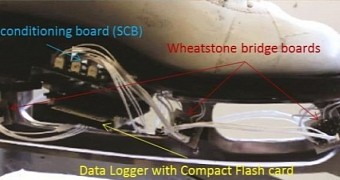Skates might not be the sort of equipment you'd expect to go through a reinvention process, since they've been essentially the same for centuries, barring some design touches here and there. Now, though, even ice skates are becoming smart.
You've no doubt noticed the trend. Now that laptops are as advanced as they can get and tablets are well established, the industry is looking at smaller consumer products, since there aren't many other paths open at the moment.
However, even so, technology companies have restricted their so-called predations to those items that already have some sort of electrical components.
Nevertheless, a group of researchers from the United States have decided to look at ice skates, of all things.
The smart ice skates
Maybe in the future we'll be able to correlate this term with bladed footwear capable of guiding your feet or at least teaching you how to glide on top of the ice.
For now, though, the smart ice skate can do only one thing: measure the force projected against the ice beneath your feet.
Amateur skaters probably don't do much besides sliding on top of the ice and the occasional break or spin. Figure skaters, however, do a lot more than that. In fact, for them, a typical training session involves 50 to 100 jumps.
The smart ice skate blade invented by the team will measure the pressure (up to six times the body weight of the skater), and thus, provide data regarding how much stress the skater puts on their joints, and whether or not the skates themselves could do with some redesigns.
The boot design might see a few refinements, since it can affect a skater's impact forces a fair bit, causing injuries. Previously, there could never be a consensus because the impact forces could never be studied enough.
How the smart ice skate blade works
The new smart ice skate blade uses strain gauges attached to the stanchions where the blade connects to the boot. The force will be measured by how the strain gauges deform due to the force induced by the ice skater (which causes the stanchions themselves to deform as well).
The electrical resistance of the strain gauges changes once their shape does, allowing a Wheatstone bridge device and a central control system to measure the differences and calculate overall force, respectively.
All the while, the measuring device (battery included) doesn't change the feel of the skates themselves, so the figure skater can do their routine in peace. The whole measuring device fits under the boot space, so no contact with the ice is made either.
Right now, only vertical forces can be measured, and an artificial leg was able to apply 14 vertical loads of 0 to 236 kg / 520 pounds.

 14 DAY TRIAL //
14 DAY TRIAL //